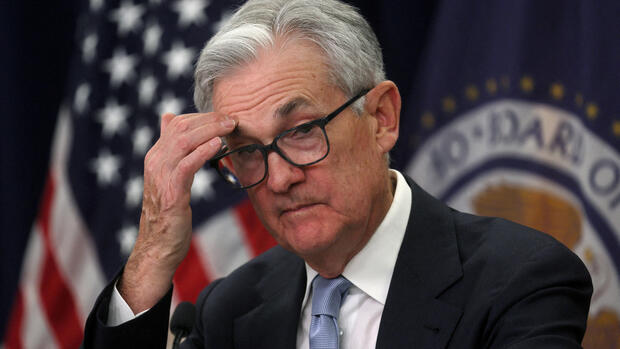The Fed may only consider “a certain amount of additional monetary tightening” to be appropriate.
(Photo: Reuters)
Washington The interest rate discussions of the US Federal Reserve (Fed) unsettled investors on Wall Street on Wednesday. At their last meeting in March, the monetary watchdogs decided to raise interest rates again. But the high risks for the economy played a central role in the debate. This comes from the minutes of the meeting, which was published on Wednesday.
The Fed’s economic team stressed in a report that a mild recession was likely this year. The central bankers thus emphasized that they were prepared to accept a recession. The head of the regional central bank in Richmond, Thomas Barkin, made a similar statement on Wednesday.
The leading index Dow Jones, the broad S&P 500 and the tech-heavy Nasdaq turned negative after the release of the data. “A recession is not yet priced into the markets,” said Cameron Dawson, head of investments at wealth manager New Edge on the US stock exchange broadcaster CNBC. Many traders had speculated that the Fed would not let it get that far.
Several US monetary authorities had considered an interest rate pause at their meeting in March in view of the banking crisis. Ultimately, however, they rejected this idea. Also because the central bankers considered the Fed’s crisis measures after the collapse of two US regional banks to be sufficient to calm the situation in the financial sector.
The minutes also reflect the expectation that inflation rates will soon fall significantly. The trend of falling inflation rates solidified in March, the latest data on Wednesday show. Accordingly, the rate of inflation fell from 6.0 to 5.0 percent. At the same time, however, the core inflation rate, which is important for the Fed, rose from 5.5 to 5.6 percent.
Fed: Next interest rate decision is due in early May
The Fed will next decide on the further interest rate strategy on May 3rd. A further increase in interest rates by a quarter of a percentage point is currently considered likely. However, the monetary policymakers could then raise interest rates less than they had thought before the banking crisis, as the minutes show. The March hike of 25 basis points, despite the turmoil in the banking industry, was the ninth straight.
The central bankers’ strategy is risky, Diane Swonk, chief economist at KMPG, warned on Thursday. “The key question is to what extent the Fed can calibrate the depth of a recession,” Swonk said. After the bankruptcy of the Silicon Valley Bank, there are signs of a significant shortage of credit. And once the economy goes into a downward spiral, it is difficult to stop it at just the right time.
This also applies to the labor market, which has recently cooled off significantly. Economists warn that once waves of layoffs begin, they cannot be reversed so quickly. Torten Slok, chief economist at the financial investor Apollo, assumes that the Fed will go too far with the interest rate hikes and could lower interest rates again this year in order to stabilize the economy and the financial system.
>> Read here: The Hidden Dangers of the Interest Rate Turnaround – Why Banks and Markets in Europe Are in Crisis
The US currency guardian Mary Daly left it open how monetary policy will continue. “Looking ahead, there is good reason to believe that more policy tightening may be needed to bring down inflation,” San Francisco Fed District Chair said in Salt Lake City, Utah. But there are also good reasons to assume that the economy will cool down even without additional monetary policy steps.
With agency material
More: US inflation rate continues to decline – but it is too early to give the all-clear
